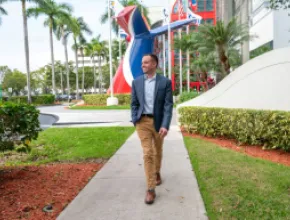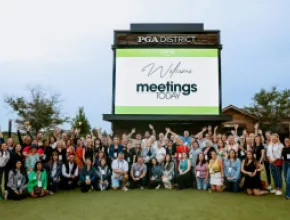Southwest Airlines recently canceled more than 1,800 flights this past holiday weekend, but a statement from the company issued October 12 said it “expects a more normal operation on Tuesday with approximately 90 system-wide cancelations out of the airline’s almost 3,300 flights scheduled for the day.”
What Caused the Cancelations?
Southwest’s initial statement on the ordeal cited disruptive weather in Florida and air traffic control issues. The Federal Aviation Administration said October 10 that “flight delays and cancelations occurred for a few hours Friday PM due to widespread severe weather, military training and limited staffing in one area of the Jacksonville en route center.”
Despite rumors online about Southwest employees protesting a COVID-19 vaccine mandate, the Southwest Airlines Pilots Association said in a statement October 11 that “we can say with confidence that our pilots are not participating in any official or unofficial job actions.”
Other important context includes that starting in late spring, “air traffic demand increased quickly and airlines struggled to ramp up their operations to meet the challenge,” according to the Dallas Morning News. Other major airlines did not experience such wide-reaching cancelations over the weekend, but the Dallas news outlet also said that Sunday was the day that Dallas-headquartered Southwest Airlines was running its most scheduled flights since the beginning of the pandemic.
Southwest said cancelations began on Friday evening, “primarily caused by weather and other external constraints” that ultimately created a domino effect.
According to the company, those initial cancelations “left aircraft and crews out of pre-planned positions to operate our schedule on Saturday. Unfortunately, the out-of-place aircraft and continued strain on our crew resources created additional cancelations across our point-to-point network that cascaded throughout the weekend and into Monday.”
In August, Spirit Airlines experienced a similar unexpected chain of events coupled with tight resources that led to 2,000 cancelations over six days.
Widespread cancelations like this are more acute for airlines like Spirit and Southwest because of their cost-effective, high-utilization models and their use of point-to-point networks, said David Slotnick, senior aviation business reporter for The Points Guy.
The value proposition for customers is great, Slotnick said, but that means “there’s no slack built into the schedule. Each plane is scheduled to be on the ground for 30 minutes, whereas for United or Delta it might be 45 minutes or an hour.”
And he added that their point-to-point networks mean that when planes end up in the wrong place, flight crews and pilots might be stranded where they happen to be.
What Does This Mean for Future Travel?
This is something that happens periodically, Slotnick said, and it’s something we might continue to see as airlines try to be as efficient and effective as possible in the wake of the pandemic when the margin for error is razor thin.
“I think for Southwest, they’re probably going to learn a lesson from this and maybe, at least while the pandemic is still going on and travel demand is so unpredictable, I imagine they’re going to cut back their schedule a little bit just to build at least some slack into the system. I think this showed that their model just doesn’t work.”
For business travelers, which certainly counts planners and attendees, Slotnick recommends that for an especially crucial trip, get where you need to be early.
“Take advantage of it when you can, when you’re a central part of the planning for the meeting or when you’re going to be speaking—just go a day early, so if there are delays, you have time to recover from that,” he said, adding: “It’s not ideal, and that’s advice that could have been given over the last 30 years of business travel. But I think, especially now, when things are so unpredictable compared to normal because of the pandemic, it’s just an extra way to protect yourself.”
Read Next: U.S. Lifts International Travel Restrictions for Vaccinated Visitors







